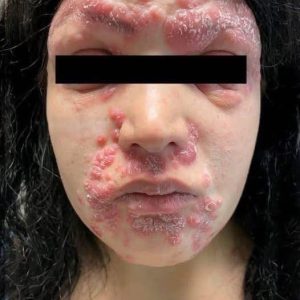Many people have likely noticed trees with white-painted trunks and wondered about the purpose behind this seemingly decorative touch. While it might appear purely aesthetic at first glance, the practice is actually a carefully considered measure used by tree planters and landscapers. Unlike other tree markings, which can indicate private property, upcoming removal, or other statuses, white paint serves a protective function. This simple treatment plays a vital role in safeguarding trees from environmental stresses, particularly those encountered during the harsh winter months.The main threat white paint combats is known as sunscald. During winter, trees face drastic temperature swings. Sunlight during the day heats the bark, causing it to expand, while nighttime temperatures drop sharply, leading the bark to contract. These repeated fluctuations can cause cracks, splits, and other damage to the tree’s trunk. Over time, such injuries compromise the health and structural integrity of the tree. By painting the trunk white, planters mitigate this risk, reflecting sunlight away and helping maintain a more stable temperature on the bark’s surface.Think of white paint as a form of natural sunscreen for trees. Just as sunscreen shields human skin from harmful ultraviolet rays and prevents burns, the white coating protects the delicate bark from overheating during sunny winter days. This preventive measure reduces the likelihood of sunscald and ensures the trunk remains strong and healthy. By applying paint to the tree’s exposed surface, planters create a barrier against extreme temperature swings, helping trees survive the winter without sustaining long-term damage.The application process for white paint is straightforward but requires some care. Typically, water-based latex paint is used, diluted with an equal amount of water to ensure it spreads evenly and does not overwhelm the bark. The paint can be applied with a brush or sprayed over larger areas to achieve full coverage of the trunk. This technique allows every part of the exposed bark to be protected, creating a uniform shield against environmental stress. Reapplication is only necessary once a year, making it a simple yet effective annual maintenance practice for tree health.Ultimately, the use of white paint demonstrates how a small, thoughtful gesture can have a significant impact on tree well-being. It protects against sunscald, prevents cracking, and supports the tree’s long-term health with minimal effort. Next time you notice a tree with a white trunk, it’s worth appreciating the practical purpose behind it: a carefully applied safeguard designed to help the tree thrive despite the challenges of winter weather. This practice highlights how simple techniques can make a meaningful difference in the care and preservation of our natural environment.
Related Posts

“Spot It First and Discover What It Says” is more than just a fun visual puzzle—it’s a window into how your mind works. In these types of images, multiple shapes, animals, or objects are hidden within a single design, and the first thing you notice can reveal surprising insights about your personality, thought patterns, and perception style. If you notice a particular object first, it may indicate whether you are detail-oriented, analytical, or focused on small elements in your environment. On the other hand, spotting a larger shape or pattern might suggest you are a big-picture thinker, able to see connections and overarching themes that others might overlook. These tests are not meant to label or judge; they simply offer a playful way to reflect on cognitive tendencies and personal traits. People often discover that their initial perception can be misleading or influenced by context, mood, or prior experiences, reminding us that the mind interprets information in unique ways. By paying attention to what you see first, you gain a small but interesting insight into how you perceive the world, think critically, and process visual information.
First impressions shape much of how we perceive the world around us, influencing both social interactions and self-reflection. They are formed almost instantaneously, often before conscious thought…

These are the consequences of choices and actions, both large and small, and how they ripple through our lives and the lives of those around us. Every decision we make carries potential outcomes—some immediate, others unfolding over time. Positive actions, such as helping others, pursuing education, or maintaining healthy habits, often lead to growth, opportunity, and stronger relationships. Conversely, negative or reckless choices can result in setbacks, conflict, or unintended harm, sometimes affecting not only ourselves but also our families, friends, and communities. Consequences are not always predictable. Even well-intentioned decisions can have unexpected results, teaching valuable lessons about cause and effect. Experiencing the outcomes of our actions, both good and bad, encourages accountability and reflection, helping us develop judgment and resilience. Understanding consequences also extends beyond the personal level. Societal, environmental, and economic choices can have far-reaching impacts, emphasizing the importance of thoughtful decision-making. Recognizing and anticipating potential outcomes allows individuals and communities to act responsibly, adapt to challenges, and foster positive change. Ultimately, consequences serve as both a guide and a reminder that our actions shape our present and future.
Intimacy is a deeply human experience, yet when it occurs with the wrong person, it can leave emotional scars that linger far beyond the initial encounter. What…

The sentencing of the individual responsible for the Charlie Kirk shooting concluded this week in a heavily secured courtroom. The proceedings were marked by careful adherence to legal protocols, with the judge, attorneys, and court staff ensuring that the process remained orderly and impartial. Security measures were heightened due to the high-profile nature of the case, with additional personnel present to maintain safety. During the hearing, both prosecution and defense presented statements, including testimonies from witnesses, legal arguments, and character references. The victim and those affected by the incident were given the opportunity to speak, expressing the impact of the crime and their hopes for justice. The judge carefully reviewed the evidence, legal precedents, and sentencing guidelines before delivering the verdict and corresponding penalties. Observers noted that the courtroom remained focused and professional, with attention given to fairness and due process. Media coverage emphasized factual reporting, avoiding speculation or inflammatory language. The sentencing represents the conclusion of this particular legal chapter, highlighting the judicial system’s role in addressing violent acts while maintaining transparency, procedural integrity, and respect for all parties involved.
The sentencing of Charlie Kirk Shooter concluded one of the most closely watched trials in recent history, drawing national attention and intense scrutiny. Inside a quiet, tension-filled…

Twenty years after the death of her legendary father, Michael Jackson, his only daughter, Paris Jackson, has finally broken her silence. Fans and the media alike have long wondered how she has navigated life growing up in the shadow of one of the most iconic figures in music history. In a heartfelt statement, Paris opened up about her journey, revealing the challenges, pressures, and personal struggles she has faced along the way. She spoke candidly about growing up in the public eye, coping with grief, and finding her own identity while honoring her father’s legacy. Paris also reflected on the importance of mental health, resilience, and surrounding herself with supportive friends and family. Her words resonated with fans worldwide, many of whom have followed her life with curiosity and admiration. Breaking her silence now, Paris not only provides insight into her personal journey but also demonstrates strength, self-awareness, and a commitment to living authentically. Her story reminds the world that even those born into fame experience universal struggles, growth, and the ongoing quest for self-discovery.
From the very beginning of his life in the spotlight, Michael Jackson’s journey was shaped by both extraordinary talent and significant personal challenges. As a child performing…

A doctor and a nurse intern were caught in an unexpected situation during a hectic day at the hospital, one that tested their professionalism and quick thinking. The emergency room was unusually crowded, with patients arriving one after another. Amid the chaos, a sudden medical complication arose with a patient, requiring immediate attention from both the doctor and the intern. As they worked together, their coordination and focus were crucial. The intern assisted by preparing instruments, monitoring vital signs, and following the doctor’s instructions closely. Meanwhile, the doctor made split-second decisions, ensuring that the patient remained stable. What could have become a dangerous or overwhelming scenario was managed successfully because of teamwork, training, and composure under pressure. Colleagues later described the moment as a high-stakes learning experience for the intern, highlighting the importance of mentorship and real-world practice in medical training. While the situation was stressful, it reinforced the value of communication, trust, and professionalism in healthcare. By the end of the day, the patient was stable, and both the doctor and intern had gained insight, confidence, and a renewed sense of purpose in their roles.
A local hospital has initiated an internal investigation following a reported breach of professional protocol involving a doctor and a nurse intern. According to multiple staff members,…

Finding an unusual spot on your child’s scalp can be worrying, especially if you can’t get a doctor’s appointment quickly. While it’s impossible to diagnose without a medical professional, there are steps you can take at home to care for your child and monitor the situation. First, carefully observe the spot. Note its size, shape, color, and texture. Look for swelling, redness, scabs, pus, or hair loss. Check whether your child is experiencing itching, tenderness, or any other symptoms like fever or fatigue, which may indicate infection. Next, avoid irritating the area. Do not scratch, pick, or squeeze the spot, as this can worsen irritation or introduce bacteria. Keep the scalp clean using a gentle, hypoallergenic shampoo, and avoid harsh chemicals or frequent washing. If there is mild itching, you can consider a child-safe anti-itch solution, such as calamine lotion, but only use products appropriate for your child’s age. Most importantly, schedule a pediatrician or dermatologist appointment as soon as possible. If the spot worsens rapidly, develops pus, swelling, severe pain, or is accompanied by fever, seek urgent care immediately. Monitoring carefully and maintaining hygiene while seeking professional evaluation is the safest approach.
Discovering a bump, lesion, or unusual patch on a child’s scalp can be a worrying experience, especially when immediate medical care is not available. While professional evaluation…